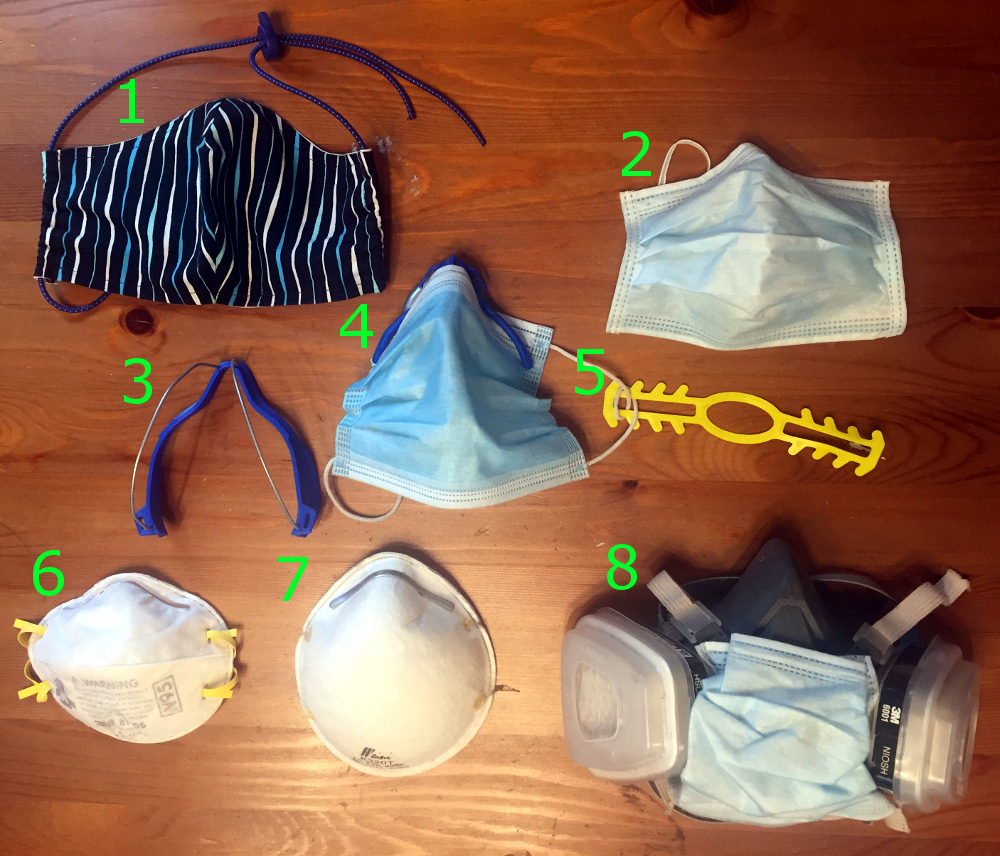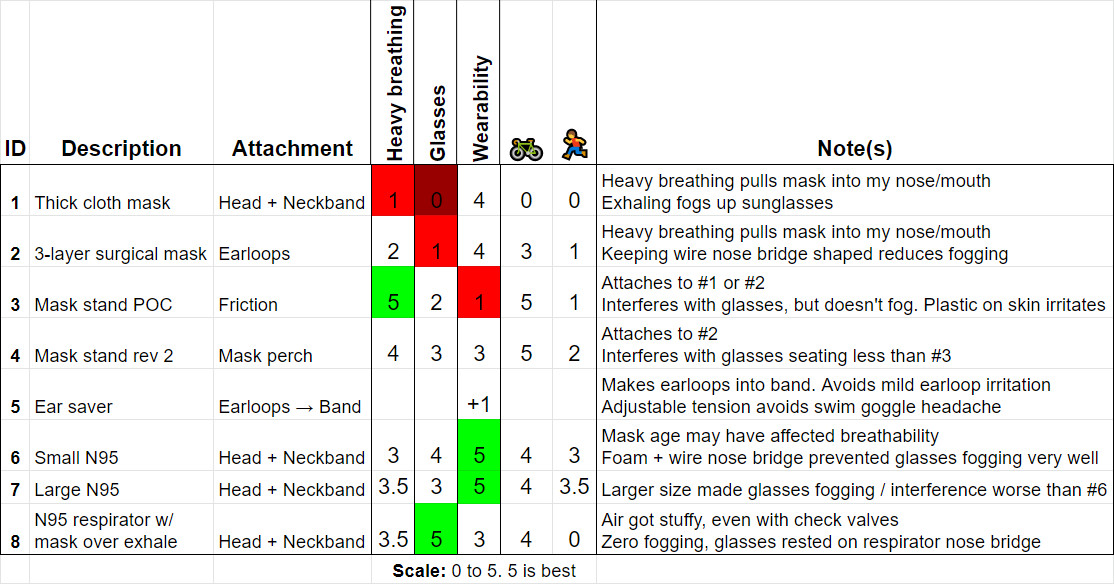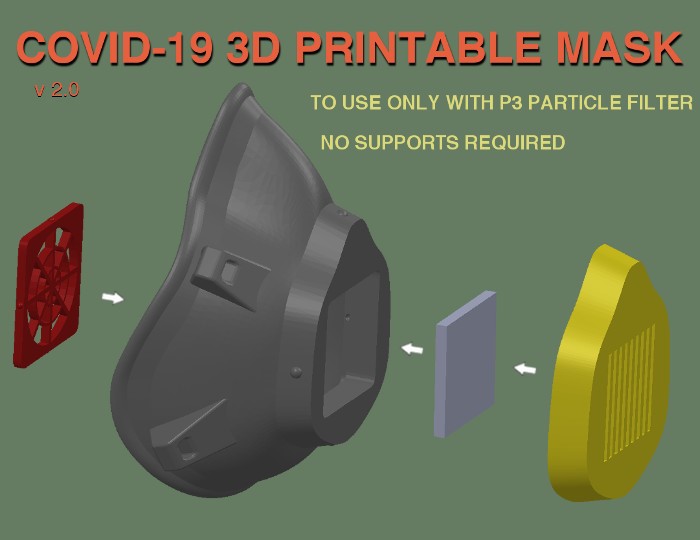Our PPE response at Crash Space started in March of 2020 with an open source face mask modified by USC Keck, which we’ve delivered to them in the thousands for emergency clinical use. It used a pulled apart HEPA filter—comparable to N95 by specification (ref: 1). The breathing port was relatively small, and though some volunteers wore them up to four hours, it was unpleasant. Safe, but unpleasant.
Now that any face mask/covering is recommended for non-clinical use when in public with few exceptions (ref: 2), I’ve been experimenting, documenting my iterations, integrating lessons from our meetings, and trying to make wearing one more friendly. So what would make facemasks better?
Improvement targets:
- Breathability
- Glasses-friendly (no fogging / interfering)
- Wearability
- Maintain baseline recommended protection or better
Torture testing:
- Can I comfortably ride a bike? 🚲
- Can I comfortably run? 🏃
Scuba divers can tell you that staying calm and breathing slowly through a restrictive device makes its presence unnoticeable. So I want to breathe fast and heavy. I’m biking at medium intensity, neither cruising nor racing. I’m running at higher intensity, which also jostles anything not securely fastened. My reasoning is that if I can do these, then everyday wear will be easy.
Masks / Mask components tested:

Testing results:

Interpreting results:
For breathability, there is no escaping physics. All N95s outperformed #1 and #2 despite having thicker/better filters because the formed shape allows more of the mask surface to be used, whereas #1 and #2 pulled into my nose and mouth, reducing the usable mask surface to the size of my open mouth. Pairing #1 or #2 with a #3 or #4 mask stand made breathability excellent, and even here, the larger surface area of the proof-of-concept (#3) had an edge. Physics.
For glasses, the only ‘5’ is #8 because it directs all exhaled breath away, and the rubber nose bridge provides a place for glasses to securely rest. Bendable metal nose bridge pieces (#2, #6, #7) reduced glasses fogging, but needed periodic resetting (constantly with #2). The foam under the nose bridge of #6 helped reduce fogging further. #3 and #4 also didn’t fog glasses because the hard frame prevented exhales from going toward glasses, but the frame interfered with seating.
Wearability is clear cut. Minimize face contact, contact the face with fabric, and reduce excess bulk. Attachment with a band or bands is more comfortable than earloops (hello again, physics), and easy adjustability addresses swim-goggle-headache.
Also, growing stuffiness with #8 was surprising (heavy breathing started at ‘4’ and reduced to ‘3’). The check valves keep air moving through, but heavy breathing builds up moisture as it overwhelms the exhalation valve’s ability to remove it. I suspect when people talk about stale air in masks, it’s actually that retained moisture and higher humidity.
Conclusion
Beyond baseline safety, mask designs should:
- Have some shaping structure
- Minimize face contact to what’s needed for sealing, and at that, contact the face with a soft material
- Maximize usable surface area without interfering with glasses / phone use / etc.
- Maximize sealing over the bridge of the nose
Not all recommendations can be optimized without introducing manufacturing or sizing complexity, but each warrants consideration.

Share: